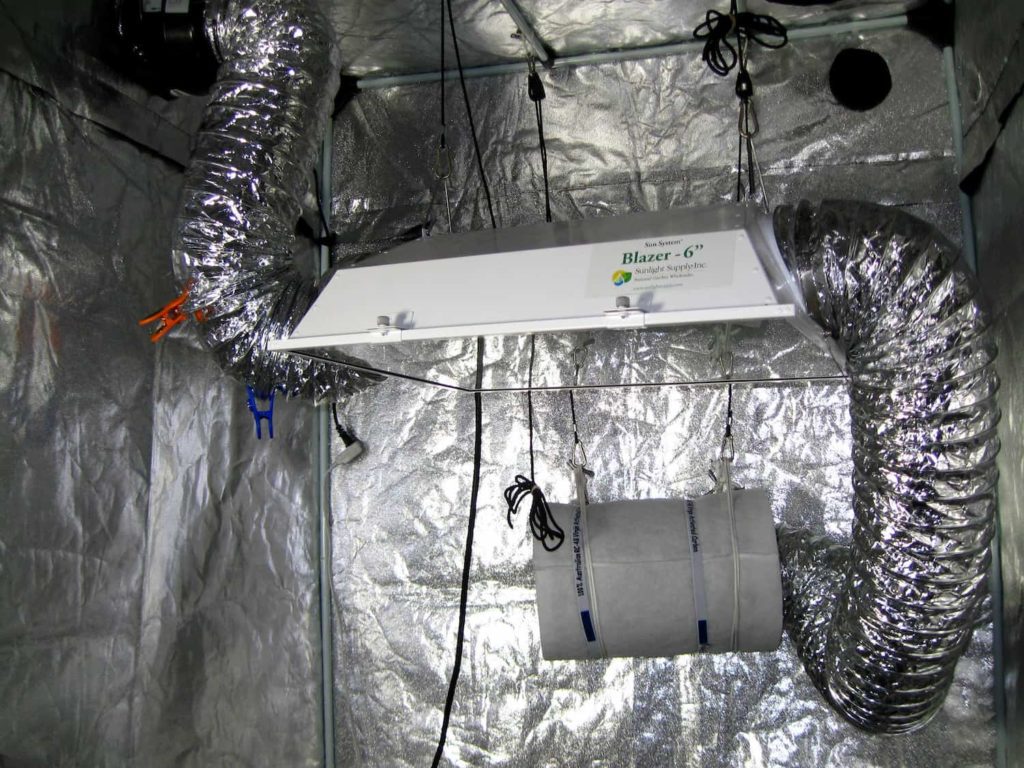Does growing indoor cannabis smell?
Yes, cannabis can emit a strong and distinctive smell when grown indoors. The pungent aroma is primarily produced by the terpenes present in the cannabis plant. These aromatic compounds are released during the flowering stage and can permeate the air within the grow space. To mitigate the odor, many indoor growers use various odor control methods, including carbon filters, to effectively eliminate or minimize the smell and maintain a discreet environment.
Growing cannabis indoors has become increasingly popular due to its numerous advantages, such as year-round cultivation, greater control over environmental factors, and enhanced privacy. However, one crucial aspect that many indoor growers often overlook is odor control. In this blog post, we will delve into the importance of maintaining a discreet and odor-free environment when growing cannabis indoors, and why using a carbon filter is a game-changer in achieving this goal.
Understanding the Odor Problem
Cannabis plants have a distinctive and pungent aroma that can permeate through walls, floors, and ventilation systems. This strong smell can attract unwanted attention from neighbors, passersby, or even law enforcement. Odor leakage not only compromises your privacy but may also have legal implications in certain jurisdictions where cannabis cultivation is regulated. Therefore, mitigating the odor problem is of utmost importance for indoor growers.
What is a Carbon Filter?
A carbon filter, also known as an activated carbon filter, is a device specifically designed to eliminate odors. It employs carbon filtration technology, which utilizes activated carbon, a highly porous material with exceptional odor-absorbing properties. When air passes through the carbon filter, the activated carbon traps and neutralizes the odor molecules, resulting in odor-free air being released back into the environment.

Benefits of Using a Carbon Filter for Growing Cannabis Indoors
- Odor Control: The primary benefit of using a carbon filter is the effective elimination of unwanted smells. By implementing a carbon filter in your ventilation system, you can significantly reduce the strong scent associated with cannabis cultivation.
- Discretion: Maintaining privacy is crucial for many indoor cannabis growers. A carbon filter ensures that the odor produced by your plants remains contained within your grow space, preventing nosy neighbors or visitors from detecting the distinct cannabis aroma.
- Compliance with Local Regulations: In areas where cannabis cultivation is legal but regulated, controlling odors is often a legal requirement. By using a carbon filter, you can ensure compliance with these regulations and avoid any potential legal issues.
- Health and Safety: Cannabis odor contains volatile organic compounds (VOCs) that can potentially irritate the respiratory system. By effectively removing these VOCs, a carbon filter contributes to a healthier and safer environment for both you and your plants.
- Improved Air Quality: Alongside odor control, carbon filters also filter out impurities, dust, and particulate matter from the air. This results in improved air quality within your grow space, which positively impacts plant health and overall cultivation success.
Factors to Consider When Choosing a Carbon Filter
When selecting a carbon filter for your indoor cannabis cultivation, consider the following factors:
- Size of the Grow Space and Airflow Requirements: Choose a carbon filter that matches the size of your grow space and can handle the volume of air being circulated. Proper airflow is essential for the filter’s optimal performance.
- Quality and Lifespan: Look for high-quality carbon filters that utilize premium activated carbon. Consider the lifespan of the filter and ensure it can effectively control odors for the duration of your cultivation cycle.
- Ease of Installation and Maintenance: Opt for a carbon filter that is easy to install and integrate into your existing ventilation system. Additionally, consider the maintenance requirements and filter replacement schedule to ensure the longevity and efficiency of the filter.
- Budget Considerations: Carbon filters are available in a range of prices, so evaluate your budget and invest in a filter that strikes a balance between affordability and performance.
Installation and Maintenance of your Carbon Filter
Tips To maximize the effectiveness of your carbon filter, keep the following tips in mind:
- Proper Placement: Install the carbon filter as close to the source of odor as possible within your ventilation system. This ensures that the odor-filled air is filtered before it can escape into the surrounding environment.
- Adequate Airflow: Ensure that your ventilation system provides enough airflow to maintain a proper exchange of air within the grow space. Insufficient airflow can reduce the efficiency of the carbon filter, so pay attention to this crucial aspect.
- Regular Maintenance: Follow the manufacturer’s instructions for maintenance and filter replacement. Regularly inspect and clean the filter to prevent clogging and maintain its odor-absorbing capabilities.
Other Odor Control Measures
While carbon filters are highly effective, you can complement their use with additional odor control measures:
- Sealed Grow Room or Tent: Consider using a sealed grow room or tent to further contain the odors within a confined space. This provides an extra layer of protection against odor leakage.
- Air Purification Systems and Ozone Generators: Depending on the size of your grow space and specific needs, you may explore the use of air purification systems or ozone generators to enhance odor control.
- Proper Plant Care and Odor Prevention Techniques: Implement good cultivation practices such as regular plant maintenance, proper ventilation, and avoiding excessive humidity or heat. These measures can minimize the production of strong odors from your cannabis plants.
Conclusion
When it comes to growing cannabis indoors, odor control is a crucial aspect that should not be overlooked. By using a carbon filter, you can effectively eliminate unwanted smells, maintain discretion, comply with local regulations, prioritize health and safety, and improve the overall air quality within your grow space. Investing in a high-quality carbon filter is an investment in successful and responsible indoor cannabis cultivation. Create a clean, odor-free, and compliant environment, and enjoy the benefits of growing cannabis discreetly and responsibly.
